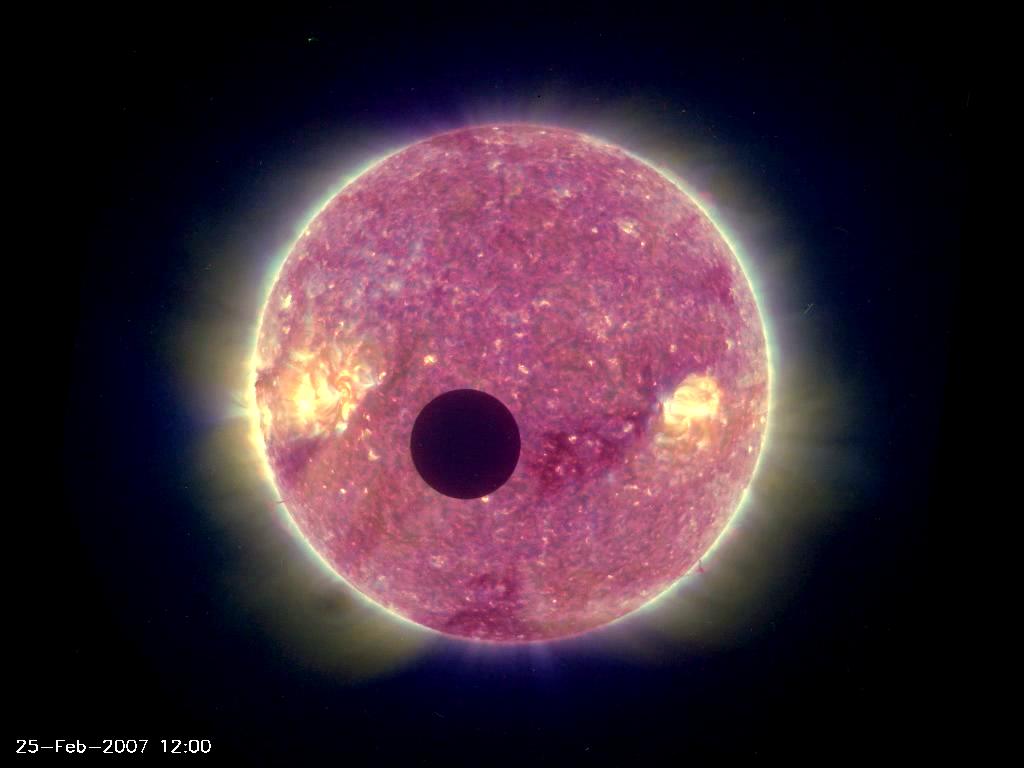 Astronomical transit is the passage of a small astronomical body across the disk or face of a significantly larger body as opposed to an eclipse where significant occultation occurs. Note that the word refers to events where the nearer and smaller object actually appears significantly smaller instead of completely hiding the other.
Astronomical transit is the passage of a small astronomical body across the disk or face of a significantly larger body as opposed to an eclipse where significant occultation occurs. Note that the word refers to events where the nearer and smaller object actually appears significantly smaller instead of completely hiding the other.
Transits are generally observed from a certain vantage point, as in the case of Mercury transiting the Sun as seen from Venus and of the moon Io transiting its parent planet Jupiter as seen from Earth. Earth could be seen transiting the Sun from Mars. While the general rule is that transit can only be observed on inferior planets, one plant can also transit in front of another. It all depends on the vantage point.
In rare cases, one planet can transit in front of another and some of it can be observed from the Earth, although the next time this is supposed to happen will be on year 2065, November 2 when Venus will transit Jupiter but this will take place a few degrees of the location of the Sun so it is not visible to unprotected, or unaided eyes.
An Astronomical Transit is a four-stage event; the first contact, where the smaller body is moving inward but is still entirely outside the larger body but the circumference has touched the larger body, the second contact where the smaller body is entirely inside the large body's disk, the third contact where the smaller body is still entirely intact but it moving outward and the last stage, the fourth contact, where the smaller body is completely outside the larger body's face.
There is an instrument built for transit observation. It is specifically adapted to study positions and motions, where the rotation of the instrument permits the axis to sweep only in the pertinent plane, resulting to excellent stability not found on other telescopes.
